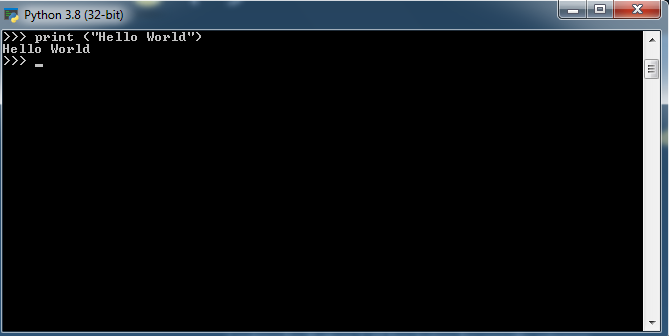Python is a programming language developed by Guido Van rossum in Amsterdam in the early 90s. It’s not named from the python snake, but from the show by Rossum’s favorite comedy group MonthyPython.
Programming languages are the bridge between machine logic and human logic. Python is an object-oriented, modular, interpretive, interactive and high-level language. The fact that a language is closer to the machine logic results in the ability to work on the machine faster. However, approaching machine logic requires distancing from human logic and making language more difficult to learn. If a programming language moves away from machine logic and approaches human logic, it is called high level, so python is therefore a high level language. It is easier to learn than most languages.
With Python, you can accomplish many tasks you need with a small number of lines of code. You can easily write many programs such as desktop applications, web applications, data analysis and visualization applications with pyhton.
Python language with “Hello World”:

Example from Java:

Python Versions
Python has been developed since 1990. Python version 1.0 was released in January 1994. This is followed by the Python 2 series. Python series is also available in lower versions, such as 2.7.11. In general, these series are expressed with names such as 2.x, 3.x. There are currently a large number of programs on the market written in Python 2.x series.
Python 3 is a more robust, error-free and more powerful language than Python 2. There have been major changes to Python 2 when creating Python 3. Therefore, a program written with Python 2 cannot run on a computer with Python 3, and vice versa.
At this point, there may be a question about which Python series to learn. If you are new to Python, it is of course a logical decision to learn Python 3. However, if you are going to work on a project written in Python, you will need to know the version in which the project was developed. Not all modules that were in use before Python 3 have yet to be imported into Python 3. But over time, the conversion will be completed and Python 3 will eliminate Python 2.
Why Python?
Python is an interpretive language, which means that it can be run without the need to compile, unlike languages such as C and C ++. This still makes it easier to develop programs with Python. When you write a program in Python, you will need many things, functions and data structures. In this way, as in other languages to solve a problem without the need to design to the finest details you can write programs with the infrastructure you can write much more quickly
Python has a simple syntax. This makes it easier and more enjoyable to write programs, as well as more easily understand the programs written by others. Python allows you to do much with little code.
What makes a programming language powerful is its ability to work on different platforms. Python can run on almost any platform. Windows, Linux, Unix, Mac, Symbian and more…
The Python language is the center of many world-famous attractions with its advantages. Organizations such as Google, Youtube, Yahoo always need Python programmers. Russom worked on Google until 2012 and then transferred to Dropbox. This is an indication of the currentity and popularity of the Python language.




